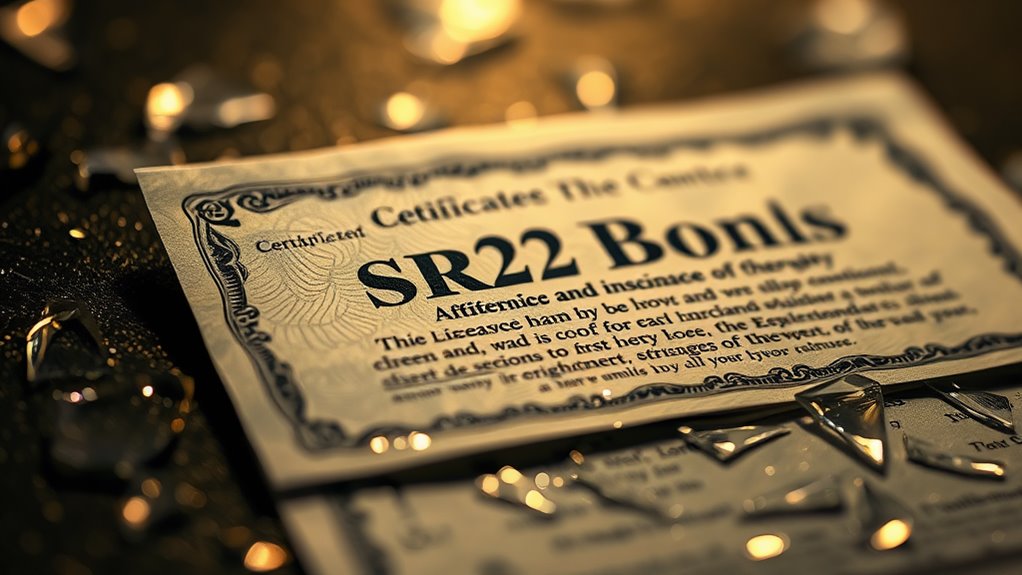
When it comes to SR-22 bonds, many misunderstand their purpose and implications. You might think an SR-22 is an insurance policy or that it guarantees your driving privileges, but that's not the case. Instead, it's a form that shows your financial responsibility as a high-risk driver. Understanding these distinctions is essential, especially if you're facing the requirements of an SR-22. So, what else do you need to know to navigate this complex landscape?
While maneuvering through the complexities of auto insurance, you might come across the term SR-22, often surrounded by misconceptions. It's essential to clarify what an SR-22 actually is. Contrary to common belief, an SR-22 isn't an insurance policy. Instead, it's a form that your insurance company files with the DMV to certify that you have the minimum required insurance coverage. This form is typically required for high-risk drivers, such as those with DUIs or multiple infractions, and its primary purpose is to demonstrate financial responsibility. Additionally, affordable SR22 insurance can be found by comparing rates from different providers, which is vital for high-risk drivers.
One common myth is that you can obtain an SR-22 without having auto insurance. This is incorrect. You must have an active auto insurance policy to file for an SR-22. Think of it this way: the SR-22 serves as an endorsement to your existing policy, not a standalone product. It confirms that you've met the state's minimum insurance requirements before you can regain your driving privileges.
Another misconception is that the SR-22 provides enhanced protection. In reality, it only guarantees minimum liability coverage. If you get into an accident, the SR-22 won't cover damage to your own vehicle, nor will it provide immunity against future license suspensions. Maintaining an SR-22 doesn't automatically secure your driving privileges; if your insurance lapses, you could still face consequences.
The SR-22 only ensures minimum liability coverage and does not guarantee driving privileges or protect against future suspensions.
Many believe that an SR-22 automatically covers multiple vehicles. This is false; it doesn't extend coverage beyond the specific vehicle listed on your auto insurance policy. If you own more than one vehicle, you'll need to verify that each one has the required minimum coverage, and each vehicle must be reported correctly. Additionally, you can't have dual insurance policies with different companies while holding an SR-22.
You might also hear that filing for an SR-22 incurs monthly payments. This is a misconception as well. The SR-22 itself doesn't have a monthly fee; instead, you pay a one-time filing fee. However, obtaining an SR-22 usually results in higher auto insurance premiums. This increase occurs because your driving record classifies you as a high-risk driver. Factors like the type of vehicle you drive and your driving history will greatly impact your premium more than the SR-22 form itself. SR-22 applies to high-risk drivers in certain situations, further emphasizing the importance of maintaining a clean driving record to avoid these additional costs.
When it comes to costs, it's worth noting that several insurers specialize in providing coverage for high-risk drivers, offering competitive rates. Shopping around can help you find the best deals.
Conclusion
To sum up, it's essential to bust these SR-22 myths wide open! Remember, an SR-22 isn't some magical insurance policy that grants you driving privileges; it's just a paperwork form that shows you're financially responsible. Think of it as a badge of honor for high-risk drivers, not a golden ticket. Don't let misconceptions steer you off course. Stay informed, navigate the requirements, and you'll be cruising confidently in no time—like a racing champion on a victory lap!
